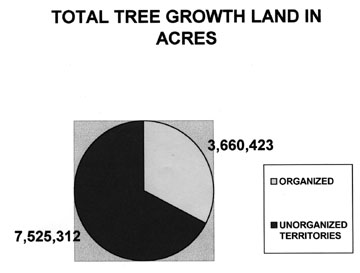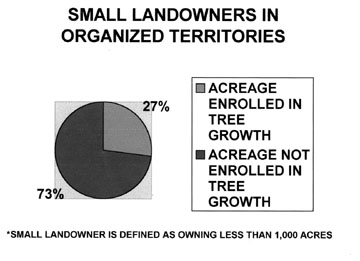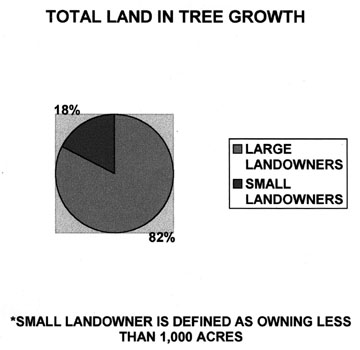|
The Tree Growth Tax Law goes way back. While the law itself was not enacted until 1972, its origins stretch back almost 48 years. Under the Tree Growth Tax Law forest land is assessed on the basis of productivity, a.k.a. its current use, and not its highest and best use. This preferential tax treatment to owners of timber and woodland is given in order to provide an adequate incentive to manage the land on a sustained yield basis and not to strip and sell the land for development.  Under the law it is the responsibility of the State Tax Assessor to furnish local assessors with the 100 percent valuation for an acre of forest land, according to forest type (soft, mixed and hardwood) and region (county) every year. In computing the current use or productivity for each forest type and county, the state takes into consideration four factors...1) the prevailing stumpage price being paid for the various types of trees harvested in each region; 2) the average rate of growth of the three forest types in each region; 3) the amount of that growth that can realistically be harvested and sold; and 4) the future earnings of the land.  To qualify for enrollment under Tree Growth a landowner must have ten acres or more of forested land (no ledges, water, bog or swamp included) and a plan to manage and harvest the land for commercial purposes. Landowners are required to file a sworn statement with the municipal assessor that a management and harvest plan has been prepared for the land in question and to submit every ten years a sworn statement from a licensed professional forester that the landowner is managing the land according to the plan.  While progress has been made toward establishing a commercial basis for this law, the definition of "commercial" still has a ways to go in the minds of some, who argue that as it currently stands it is not stringent enough to prevent landowners who do not truly use their woodland commercially to continue to qualify for the Tree Growth tax break. As stated in the law, "commercial harvesting" means "the harvesting of forest products that have commercial value" such as "logs, pulp wood, veneer, bolt wood, wood chips, stud wood, poles, pilings, biomass, fuel wood, Christmas trees, maple syrup, nursery products used for ornamental purposes, wreaths, bow materials or cones or other seed products." Critics of this definition of commercial harvesting argue that it has no quantifiable standards in terms of the value or amounts of forest products harvested. The above summary was derived from two articles by FEN board member Jo Josephson. |